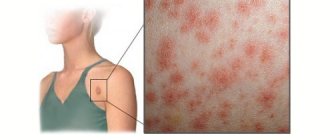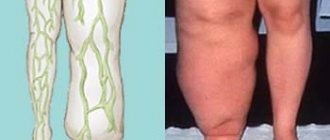Tay Sachs disease - main symptoms:
- Amyotrophy
- Hearing loss
- Swallowing disorder
- Decreased vision
- Impaired concentration
- Enlargement of the head
- Paralysis
- Breathing problems
- Eye twitching
- Deafness
- Loss of vision
- Decreased muscle tone
- Mental retardation
- Retarded physical development
- Deterioration of visual perception
- Sitting problems
- Difficulty turning over from stomach to back
- Loud noise intolerance
- Reduced activity
- Decreased motor skills
What is Tay Sachs disease
Tay Sachs disease is a genetic pathology that affects the brain and nervous system. This includes the spinal cord and meninges. In the first six months of a child's life, his development is normal. Then disruptions in brain activity begin. Newborn children are diagnosed with gangliosidosis gm1. Such patients die after 3 - 4 years. This pathology has a second name – gm2 gangliosidosis.
- Etiology
- Classification
- Symptoms
- Diagnostics
- Treatment
- Prevention
Scope of distribution
Most often, amaurotic idiocy affects Jews (Ashkenazim) living in Central Europe. Research has confirmed that about 3% of representatives of this ethnic group are carriers of the mutant gene. The frequency of detection of pathology in this population is 1 in 3500 newborns. An anomaly is also recorded among the population of Southern Canada (mainly among people of Irish, Italian, and French origin living in southeastern Quebec).
The incidence of Tay-Sachs disease does not depend on gender. Pathology is found equally in representatives of the female and male population.
Among other nationalities, the disease is detected much less frequently - in one patient out of 320,000 people.
Cause of illness
With Tay Sachs disease, there is only one reason - the development of the disease in a baby is possible only in one case, when both parents have a mutated gene, which will be passed on from father and mother to the child. But if only one parent has the mutated gene, then the risk of developing the pathology in the child is zero - the baby will be a carrier.
The cause of Tay Sachs disease is this: the body stops producing a special enzyme, hexosaminidase, because it contains an altered gene. The breakdown of lipids (gangliosides) in the cells of the body is also disrupted.
In a healthy body, this process occurs with great precision. If any failure occurs, then irreversible complications will arise. In the event of a genetic failure, the breakdown of gangliosides does not occur: they gradually accumulate in the body, and this leads to a malfunction of the brain and central nervous system. It is impossible to remove them from the body, so a person develops characteristic symptoms of Tay Sachs disease.
Photos of children with Tay-Sachs disease
Causes of amaurotic idiocy
This pathology is associated with a defect in the genetic code.
The causes of Tay-Sachs disease lie in the reduced production of one of the links in the enzymatic cascade - hexosaminidase A. It is involved in the synthesis and transformation of substances necessary for the full performance of all functions by brain cells. Due to its deficiency, the above processes are disrupted, accumulation of lipids and gangliosides in nerve cells is observed, as a result of which the coordinated work of the central nervous system structures is not possible. The type of inheritance of Tay-Sachs disease is autosomal recessive. For the development of pathological changes, the presence of two gene defects in the 15th pair of chromosomes is required.
Classification
There are three forms of this pathology:
- Children's room. Once the child reaches six months, a constant deterioration in physical health begins. In addition, mental difficulties arise. Vision decreases, deafness appears, and the swallowing reflex disappears. The muscles begin to atrophy, and over time, paralysis occurs. Life expectancy for this form of pathology is 4 years. Such babies are diagnosed with gangliosidosis gm1 or generalized gangliosidosis.
- Teenage. Problems with motor skills and mental performance begin. The swallowing process is disrupted, speech is distorted, and an unsteady gait appears. The muscle tone of the limbs increases. Life expectancy is 16 years.
- Adult. Appears closer to 30 years of age. Neurological functions and gait begin to deteriorate. Characteristic symptoms of this form are problems with speech, swallowing, and gait. Decreased mental performance, increased muscle tone. Schizophrenia begins to manifest itself in the form of psychosis.
With the latter form we can say that the person will be disabled. Life expectancy will depend on many factors.
Disease prevention
To prevent the disease, spouses who want to have children must undergo testing for the presence of the gene for this disease, if there were cases of Tay-Sachs disease in the family of at least one of the spouses.
If such a gene is found in both spouses, then they are categorically not recommended to conceive children. It happens that during the examination a woman is already carrying a child, then a special procedure is prescribed to identify the defective gene in the child - amniocentesis
.
For this purpose, amniotic fluid obtained by puncture of the amniotic membrane is subjected to laboratory testing. If the defective gene is found, the pregnancy must be terminated.
If future parents have accurate information that they are carriers of a defective gene, and pregnancy has already occurred, then it is necessary to undergo a screening test at the twelfth week.
To conduct the study, doctors take blood from the placenta to find out whether the unborn baby has inherited mutant genes.
Future parents need to take responsibility for their own health and the health of their future children and follow all doctor’s recommendations.
Prenatal diagnosis during every pregnancy enables a married couple to give birth to healthy children.
- Deafness
- Swallowing disorder
- Breathing problems
- Impaired concentration
- Loud noise intolerance
- Mental retardation
- Retarded physical development
- Paralysis
- Eye twitching
- Loss of vision
- Sitting problems
- Decreased motor skills
- Decreased vision
- Decreased muscle tone
- Reduced activity
- Difficulty turning over from stomach to back
- Enlargement of the head
- Deterioration of visual perception
Tay-Sachs disease is a genetic pathology that affects the brain and nervous system. This includes the spinal cord and meninges. In the first six months of a child's life, his development is normal. Then disruptions in brain activity begin. Newborn children are diagnosed with gangliosidosis gm1. Such patients die after 3 - 4 years. This pathology has a second name – gm2 gangliosidosis.
Symptoms of the disease
For each period of a child's life up to one year, Tay Sachs disease exhibits symptoms of a different nature.
Age up to six months:
- it is difficult for the baby to concentrate on one subject;
- decreased visual perception;
- eye twitching;
- repetition of very loud sounds.
From six months to ten months:
- decreased activity;
- low muscle tone;
- the baby sits poorly, rolls over, motor skills decrease;
- vision deteriorates;
- hearing decreases to the point of deafness;
- head size increases.
After ten months:
- blindness develops;
- mental retardation;
- paralysis;
- breathing and swallowing problems.
The first symptom of Tay Sachs disease is the baby's sharp sensitivity to loud sounds. It will also be accompanied by an unusual reaction. The child begins to experience delayed physical and mental development. Lost interest in the environment and close relatives. Acquired skills disappear. Over time, blindness and mental retardation begin. Muscle atrophy occurs. In the later stages of pathology development, seizures occur.
After ten months, gm2 gangliosidosis begins to progress rapidly. Seizures begin - flashes of electrical brain activity that occur for unknown reasons. They affect the functioning of the musculoskeletal system, visual images are perceived incorrectly. Speech and psychological perception of reality are impaired. In each case, the degree of damage is individual. For example, some are convulsing on the floor, others are standing motionless. Some patients may smell or see images that are not visible to a healthy person.
In the final stages of the pathology, some patients are fed through a tube. In this state, there is practically nothing that can be done to help him. The only thing is that it requires careful care, as well as treatment for emerging infectious diseases. Death occurs due to pneumonia or other infection.
Main symptoms of Tay Sachs disease.
Main symptoms
The pathology is diagnosed in babies at the age of approximately six months, since until four to five months the child develops quite normally, like all children of this age.
initial stage
The first symptoms of Tay Sachs disease are that the child loses contact with the outside world, his gaze is constantly focused in one direction, the baby does not want anything, he becomes apathetic, he has no reaction to objects, sounds, familiar faces.
He has an increased reaction exclusively to loud and sharp sounds. Even when the baby looks completely healthy, parents and loved ones often notice that the child shudders sharply with his whole body when exposed to loud auditory stimulation.
A complex of disorders manifested by increased fatigue, sleep disturbances, and mood instability are called by one term - asthenia.
Hereditary Friedreich's ataxia causes serious damage to the nervous system - causes, symptoms and treatment of pathology.
Development of the disease
The second stage of the disease is regression in the child’s development: acquired skills are lost, he refuses to crawl, sit, becomes passive, toys do not cause any interest, mental retardation occurs, at the same time the size of the head increases significantly, the baby begins to lose vision, and often hearing.
At a later stage, between the first and second years of life, the baby is likely to experience seizures, manifested in the form of convulsions and paralysis.
Babies do not gain weight, but quickly lose it. With this development of the disease, the child rarely survives to the age of five.
Signs of the disease in adults
The adult form is very rare and occurs in patients between 20 and 30 years of age. It is usually not fatal.
Article on the topic: Antigrippin (tablets, powder) - instructions for use, reviews of the drug
The disease manifests itself in gait disturbances and rapid deterioration of neurological functions. An adult can live with this disease for 10 to 15 years after diagnosis.
Diagnostics
If symptoms appear, you should consult your doctor. He will refer the patient for examination.
Diagnosis of Tay Sachs disease is as follows:
- An examination is carried out by an ophthalmologist. When checking the organs of vision, when this pathology develops, the doctor identifies a cherry-red spot on the fundus.
- A skin biopsy is prescribed.
- Blood analysis.
Before the baby is born, Tay Sachs disease is diagnosed during an analysis of the amniotic fluid. They take it by puncturing the amniotic sac.
Prevention
Prevention of Tay Sachs disease is as follows:
- A married couple must undergo a special examination before conceiving. Based on its results, the presence or absence of mutant genes is determined. If they were found in both parents, then it is recommended not to have children.
- If pregnancy has occurred and the parents know that they are carriers of the mutated gene, then a screening test is performed at the twelfth week. To do this, blood is taken from the placenta. Based on its results, the doctor identifies the presence or absence of such a deviation in the fetus.
Future parents should take care of their health and especially the health of their unborn baby. Therefore, it is necessary to follow all the doctor’s advice and recommendations. Carrying out an examination before conception will enable the child to be healthy.
Causes of the disease
The causes of the disease lie in disorders at the genetic level
, which occur in ganglioside metabolism. These special lipids, exceeding 300 times the norm, are concentrated in the gray matter of the brain.
Accumulation also occurs in the liver and spleen. The disease is based on a deficiency of one of the types of enzymes that affect lipid metabolism (hexosaminidase A).
The disease occurs in a ratio of 1 in 250,000. This disease mainly affects the population of ethnic groups, for example, the French, whose place of residence is Canada.
Jews from Eastern Europe are also susceptible to the disease, with a higher incidence rate of 1 in 4,000 people.
This disease develops in a child who has inherited two genes with a defect, that is, the disease is inherited in an autosomal recessive manner. What does it mean?
A child inherits genes from dad and mom in equal amounts. If one or both chromosomes of a pair are damaged, then a genetic disease is said to occur. In people with Tay-Sachs disease, both chromosomes in a pair are defective.
This disorder is called a disease with autosomal recessive inheritance. If one of the parents has a defective gene, the baby will be healthy, but with a 50% chance of being a carrier, which jeopardizes the health of his heirs in the future. If both parents have a gene with a defect, there are three possible developments.
There is a 25% chance that a child will be born healthy and will not be a carrier of the gene. In 50% of cases, the baby will be a carrier of the defective gene, but will be born healthy. In 25% of cases, the baby may get two genes with a defect, and he will be born with Tay-Sachs disease.
Risk factors
The driving force for the development of this disease is the gradual accumulation of gangliosides in the nervous system - substances that affect the normal functioning of cells of the nervous system.
All sick children have a damaged gene responsible for the complete synthesis of hexosaminidase enzymes.
A child's body with a congenital disease cannot continuously process fatty substances, so they accumulate and are then deposited in the brain.
This leads to the fact that the activity of nerve cells is blocked and serious consequences occur for the entire body. In the body of a healthy child, gangliosides are constantly synthesized and broken down.
What to do?
If you think you have Tay Sachs disease
and the symptoms characteristic of this disease, then doctors can help you: pediatrician, neurologist, geneticist.
We wish everyone good health!
Diseases with similar symptoms
Leukodystrophy (overlapping symptoms: 5 out of 20)
Leukodystrophy is a pathology of neurodegenerative origin, of which there are more than sixty varieties. The disease is characterized by a metabolic disorder, which leads to the accumulation of specific components in the brain or spinal cord that destroy a substance such as myelin.
Did you like the article? Share with friends on social networks:












